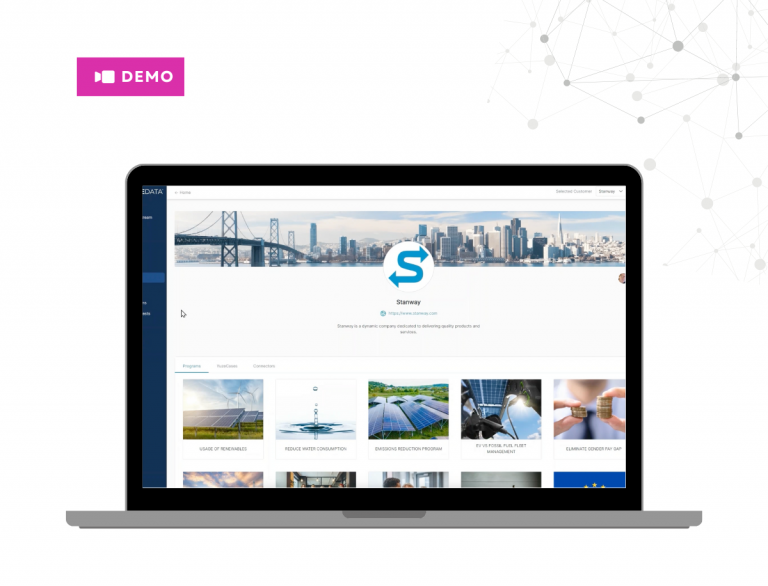Fragmented data sources are a common yet often overlooked challenge in the Environmental, Health, and Safety (EHS) and Environmental, Social, and Governance (ESG) sectors.
Imagine a company managing its environmental compliance through spreadsheets, logging incidents in a separate internal database, and using an entirely different tool to track GHG metrics.
If you’ve been around in Sales, you’ve seen that more often than not!
This data fragmentation is not just inconvenient; it creates blind spots, hinders compliance, and increases the likelihood of costly errors.
For EHS/ESG software providers, addressing this pain point can make all the difference between a lost lead and a signed deal. The key to solving these problems and winning more clients lies in data integration—uniting scattered information into a single, accessible platform for a real-time, comprehensive view of compliance, risk, and performance.
And yes, ideally, your software would cover every domain process, making it a single solution, but is that realistic?
Don’t all clients have that one team that can’t switch tools for XY reason? Or the one subsidiary that won’t be able to use the same system as the rest of the company? And what about the existing, established HR, financial, or accounting system that needs to integrate with ESG/EHS tools to give your client the complete picture?
That’s where data integrations as a strategy will help you win more deals!

The Benefits of Data Integrations in EHS/ESG Software
Unified Data Platform: One Source of Truth
The first and most obvious benefit of data integrations is having a unified data platform. By consolidating information from multiple sources—whether it’s compliance data, safety incident reports, or sustainability metrics—EHS/ESG software can serve as the “single source of truth.” This is a game-changer for clients who are tired of sifting through spreadsheets, emails, legacy tools, new software solutions, and various databases just to get full insight to their operations.
For example, imagine a multinational company in the energy sector wanting to implement a new EHS software with integrated data capabilities. Their compliance team spends countless hours consolidating data from various geographic locations, and there is no way they can get the full picture of what’s happening, let alone in real time. Some countries use a legacy tool to collect data, others use their homemade internal system, while the majority of the subsidiaries use a somewhat global software solution.
You might suggest switching them all to one global solution, and in an ideal world it would be the best-case scenario, but the reality is often not that simple!
Legacy tools can’t or won’t easily be replaced, some countries may have limitations, or it will simply be too costly to replace everything (at least right away), so you’ll lose the deal because, well, it’s just too much or not realistic!
That’s where data integration platforms like YuzeData can help.
With integrated data, they could access real-time compliance data across all their sites from a single dashboard without changing everything, just implementing your solution with turnkey integrations. This streamlined approach can reduce their reporting time by 60% and allow them to focus on proactive risk management rather than firefighting compliance issues.
Real-Time Insights: Proactive, Not Reactive
When data from multiple sources is integrated, clients gain access to real-time insights into compliance status, risk areas, sustainability, and overall performance. This shift from reactive to proactive management is invaluable.
Consider an agricultural company that adopted an EHS software with integrated data feeds from its IoT-based environmental monitoring systems, regulatory databases, and internal safety incident tracking tools. With real-time insights, the company can now immediately identify potential compliance risks, such as exceeding permitted emission levels, and take corrective action before they result in penalties. This proactive stance has saved them hundreds of thousands of dollars in fines and improved their overall environmental performance.
Improved Decision-Making and Reporting
Integrated data empowers better decision-making. A finance company using ESG software with integrated data capabilities can, for example, easily correlate its sustainability initiatives with financial performance metrics. This not only helps them understand the ROI of their ESG investments but also makes their annual sustainability reporting far more credible and compelling.
In one instance, a client in the pharmaceutical sector was able to integrate data from their supply chain, employee health records, and environmental impact metrics into a single platform. With this unified view, they quickly identified that suppliers with higher greenhouse gas emissions also had higher rates of workplace safety incidents. This insight enabled them to make informed decisions about which suppliers to prioritize, leading to a more ethical and safe supply chain.
How Data Integrations Drive Sales for EHS/ESG Software Providers
So, why do data integrations help you close more deals?
- Addressing Client Pain Points: As highlighted in the examples above, clients often face challenges with data silos. By positioning data integrations as a core feature of your software, you directly address a common pain point and show that you understand their needs.
- Delivering Clear ROI: Integrated data leads to measurable benefits like time savings, reduced risk, and more streamlined compliance processes. These are powerful points that sales teams can use to demonstrate a clear return on investment to potential clients.
- Creating a Competitive Edge: Not all EHS/ESG software providers offer robust data integration capabilities. By emphasizing this feature, you set your product apart in the market, giving you an edge over competitors.
Introducing YuzeData: Bridging the Data Gaps
Now, how do you make this data integration process straightforward and effective for clients?
This is where YuzeData comes into play. YuzeData is designed to seamlessly integrate disparate data sources, whether they are internal databases, IoT systems, external regulatory data, or even legacy software.
With YuzeData, companies can:
- Connect Diverse Data Sources: From environmental monitoring systems to employee health records, YuzeData can pull in data from virtually any source and consolidate it into a single, unified platform.
- Real-Time Processing: YuzeData offers real-time data integration, providing companies with up-to-the-minute insights and the ability to react swiftly to emerging risks.
- Lower Maintenance Costs: With YuzeData as part of your solution offering, not only delivering the integrations but also monitoring and maintaining them, customers don’t need a team of IT specialists to manage their data connectivity, making the process smooth, transparent and efficient.
By incorporating YuzeData into your EHS/ESG software offering, you provide clients with the missing piece they need to bridge their data gaps and take their compliance, risk management, and performance to the next level.
Conclusion
Data integrations aren’t just a nice-to-have feature; they’re the key to providing clients with a comprehensive, real-time view of their EHS/ESG landscape. By addressing data fragmentation, your software can directly solve a critical pain point, offering clients clear value and ROI. And with YuzeData’s powerful integration capabilities, you have an even more compelling pitch to win over potential clients and stand out in the competitive market.
Ready to offer a truly integrated EHS/ESG solution?
Let YuzeData help you bridge the data gaps and empower your clients with the unified platform they need to succeed, Request a demo now!







